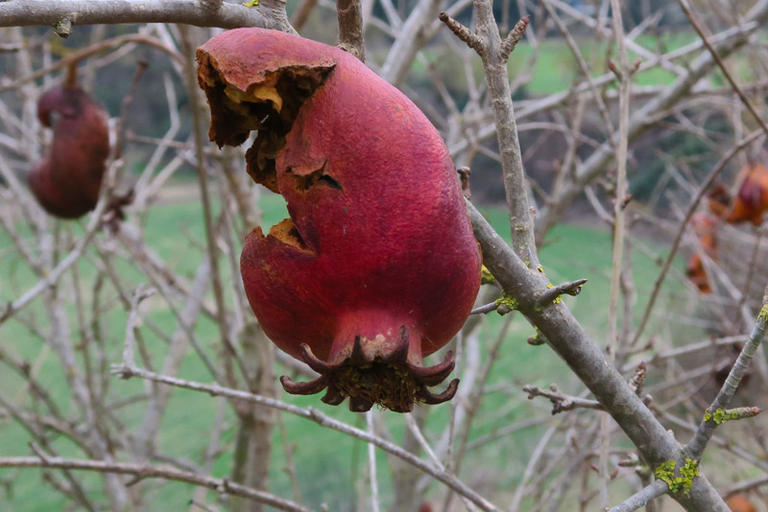
Introduction
The pomegranate (Punica granatum), a species originating in the north of Africa and the west of Asia, is a solitary tree which grows on the edge of fields and often self-seeds and grows wild, although people in Mediterranean climates used to encourage it to grow in market gardens, boundaries and other small pieces of rocky ground or ground that could not be used for other purposes.
The tree itself and its fruits have a long legendary and religious tradition as a symbol of fertility and abundance.
It is a deciduous tree which can reach up to 5 m in height, and is dense, with simple leaves and some thorns.
The very bright pinkish-red seeds are contained in the yellow or reddish fruit which matures in the autumn. Once the seeds have been separated, they are an exquisite delicacy typical of the autumn, to accompany salads or eat on their own with orange juice, yoghurt, desert wine or other things. They are also used for making preserves and syrups.
It is a very flavourful fruit which is high in vitamins and contains potassium and citric acid. If they are not picked at the right moment, they rot on the tree very quickly.